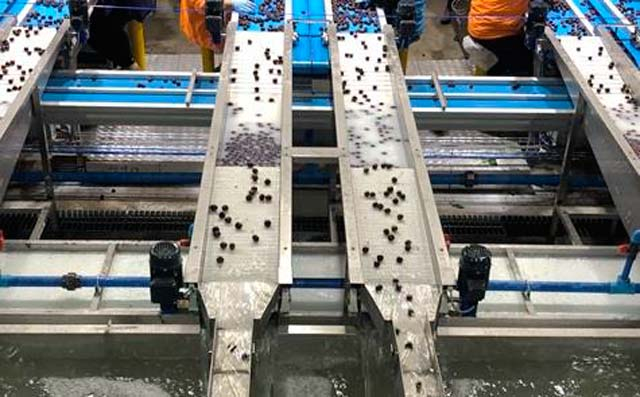Fungicide application: Storage life potential of packed fruit is also challenged by development of post-harvest rots.
Fungicide application (cont from last issue)
Studies of post-harvest rots in Australia showed that Botrytis cinerea (grey mould) was the dominant pathogen in Tasmania, whilst Alternaria alternata was the dominant pathogen in Orange and Young, NSW.
Alternate pathogens are responsible for rot across different production regions although treatment remains similar.
Pre-harvest fungicide applications and orchard hygiene practices typically reduce the number of spores present on the fruit and decrease latent infections by the time cherries reach the packhouse.
Infections can be caused by contaminated water or humid conditions during storage. Most commercial producers pack fruit into specialised polyethylene box liners. These liners create a controlled environment in which humidity remains high and gases transpired from fruit can be removed.
Although this high humidity decreases water loss in fruit and prevents stem browning, rot development can be exacerbated if storage temperatures are too high.
Prevent post-harvest infections
To prevent post-harvest infections, most packing lines will have a fungicide dip installed.
This dip sees fruit dropped into a small tank of chilled, fungicide-treated water before excess water is recycled to the tank and cherries are transferred to final sorting belt (Figure 1). This treated water is usually separate to flume transfer water to avoid excessive costs of treating the large volume required to run flumes.
Registered fungicides
There are currently two fungicides registered for post-harvest use in cherries in Australia:
Fludioxonil (sold under the trade name Scholar) is registered for control of Monilinia spp., Botrytis cinerea, and Rhizopus stolonifera.
Iprodione (sold under the trade name Rovral) is registered for control of Monilinia spp., and Rhizopus stolonifera.
Botrytis cinerea has been found to reproduce, albeit slowly, even at the low temperatures associated with cherry storage.
Considering the high likelihood of spores being present in packed produce and high humidity storage conditions, fludioxonil treatment represents the best fungicide treatment for producers in Tasmania to lower the risk of post-harvest rots developing in storage.
However, studies have shown that dominant pathogens can vary from region to region and as such, fungicide treatments may need to vary to ensure effectiveness.
Regulations
Many importing counties (particularly in the European Union and Asia) have tight restrictions on the use of synthetic post-harvest fungicides. Producers must be aware of regulations in place for all prospective trade partners and find a balance between potentially limiting market access and packing cherries with a potentially greater shelf life.
Cooling and Packaging
Post packing cooling (cont next issue)
See this article in Tree Fruit Jan 2022






















